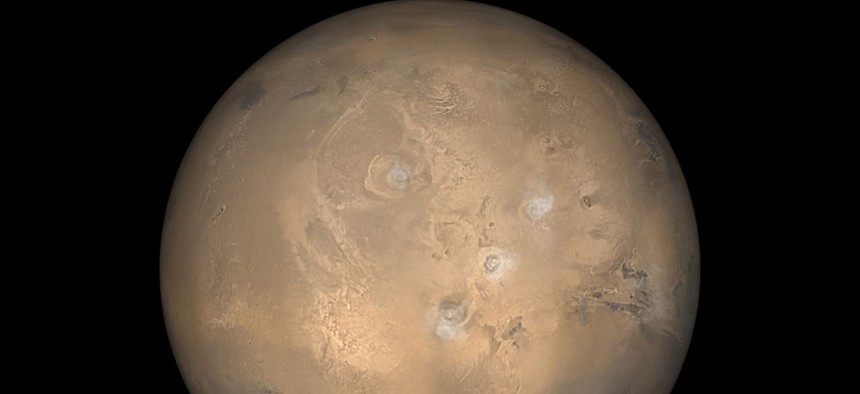
NASA / JPL
Recruits Begin a Year-Long Isolation Mission to Simulate Mars
An actual trip to the red planet for the NASA recruits could take up to three years.
Three men, three women, 365 days.
NASA is concerned about the effect that prolonged isolation could have on the members of any potential mission to Mars—a mission that, they estimate, could take as long as three years.
To test how confined conditions and the lack of contact with other earthlings could affect a crew, they are funding a series of experiments run by the University of Hawaii, in which small teams are shut away in a facility that mimics the experience of living on the red planet. The longest of the trials to date—a full year—began this weekend.
T-38 hours! It's the last full day for the #HISEAS Mission IV crew before they're head to sim-Mars for a year! pic.twitter.com/kNykKVdfTy
— Joseph Gruber (@JosephGruber) August 27, 2015Mars-like conditions are simulated by a small dome 8,000 feet above sea level, on a rocky plane of the Mauna Loa volcano in Hawaii—thought to be the closest Earth analog to a Martian climate, as a New Yorker article on a related earlier experiment explained.
The volunteer crew, comprised of four Americans, a French astrobiologist, and a German physicist, will go out once a week to conduct experiments, but only while wearing space suits. They can communicate with the outside world electronically, but only after a delay to simulate the vast distance between Earth and Mars.
The previous Mars simulation mission at the site lasted eight months, and ended in June. During that iteration of the Hawaii Space Exploration Analog and Simulation (HI-SEAS) project, the volunteers only ate food that would survive a mission to Mars. Water for drinking and washing was limited.
Martha Lenio, a doctor of photovoltaic engineering, emerged from eight months in the dome in 2014. She was happy to be able to see trees, eat salads, and go running again, she said, but had found her time in isolation a welcome break from the pressures of constant communication: “I really liked not having to do the social media thing, and the delay on all communications,” she wrote on her blog. “It’s weird sending an e-mail, and having a response almost instantly! And then I feel pressure to also answer immediately now.”






